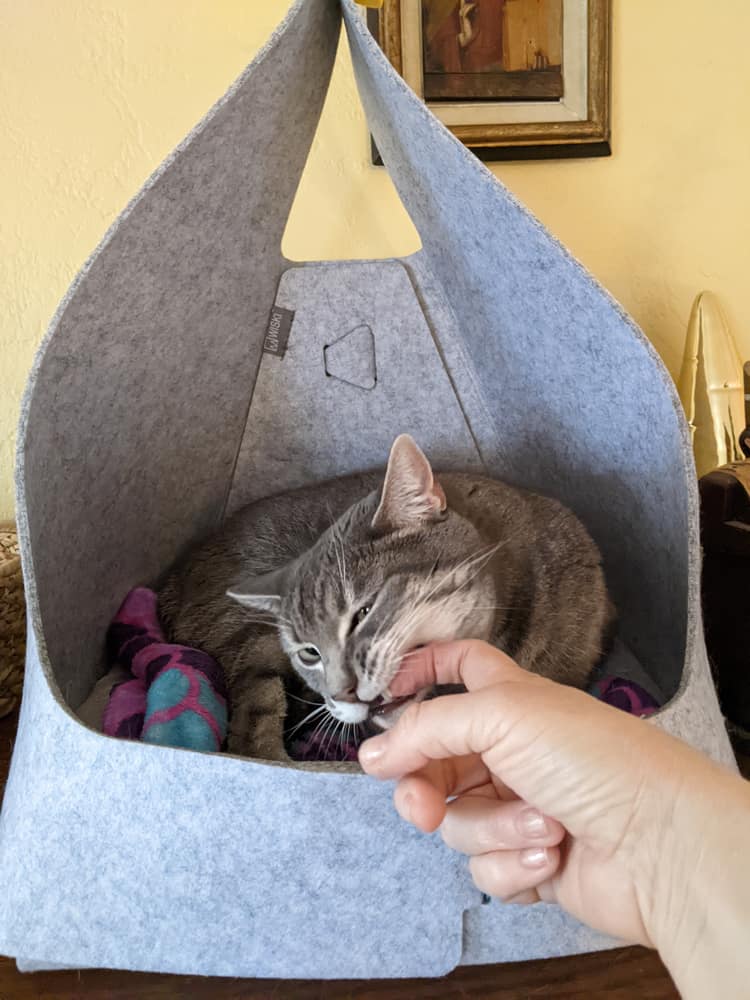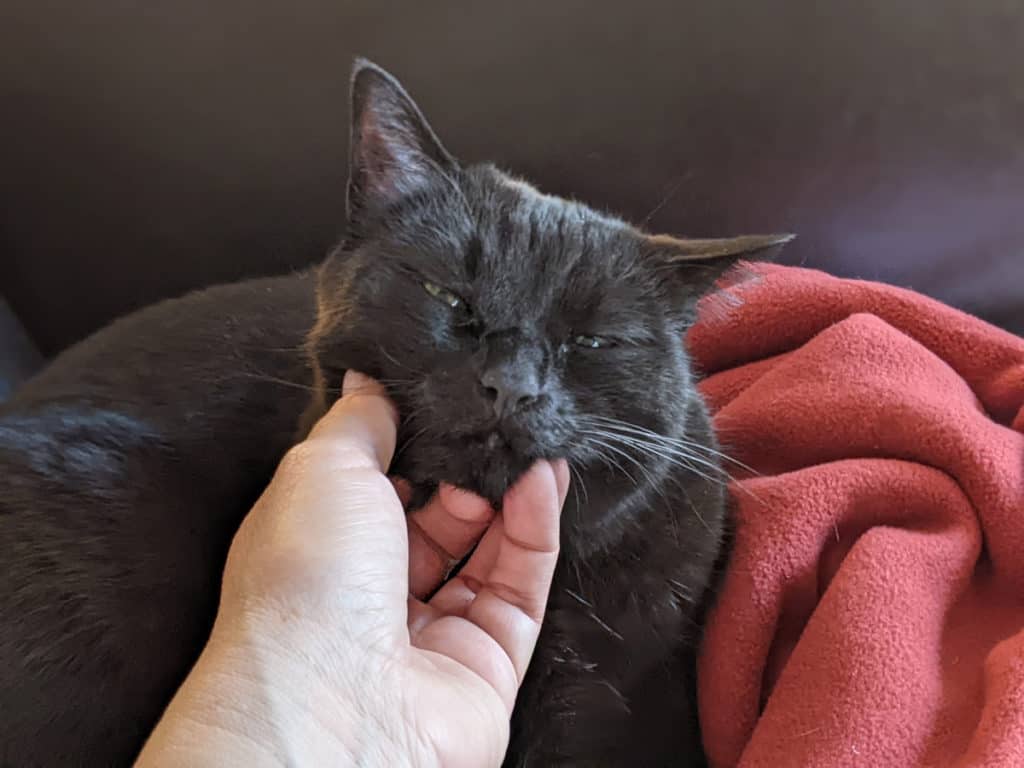Most domestic cats are highly affectionate and love to be pet and groomed by humans. Scratching around the ears, under the chin, and broad pets down the back of most socialized cats is typically met with signs of enjoyment: purring and a relaxed body.
Some cats, however, can get overstimulated by the grooming and will react by biting the hand that is doing the petting. This biting is known as “petting aggression“.
What is Petting Aggression?
The negative reaction of some cats to being pet is called “petting-induced aggression.”
There are two main reasons why a cat may react to petting by biting.
Not all cats love a lot of physical attention from their owners. Some cats are highly intolerant of physical touching and the biting can be a sign that the petting is uncomfortable to the cat.
Other cats become over-stimulated by being pet and that sets off their hunting instincts which involves biting anything that moves.
I have a gray tabby who predictably play bite in response to my stimulating her front paws with my fingers. She never bites hard and only mouths my fingers in playful response to the stimulation.

How to Avoid Having Your Cat Bite You
First, never punish your cat if they bite you as a result of you over petting them. The cat’s reaction is instinctual and punishing them will only cause confusion. Physically restraining or verbally scolding your cat will for their reflexes to protect themselves will only create anxiety and make the cat even more sensitivity to being pet.
Make Sure the Biting Isn’t Health Related
It’s important to make sure the biting isn’t a result of you petting an injured or infected area of your cat. A cat with a flea infestation will develop sore areas particularly at the base of their tail that will require treatment.
Likewise, if your cat has an injury, they make react aggressively to being touch in that area.
Always check with your vet if you have concerns about the health of your cat.
Learn Your Cat’s Threshold for Affection
Each cat is different in their level of affection depending on their personality and socialization background. For example, cats that were handled frequently by humans as young kittens tend to be more accepting of being held then cats that weren’t socialized until they were older kittens.
Some cats show affection by simply enjoying their naps in the same area as you. Other cats love to be held, sit on your lap or sleep on your at night but don’t enjoy being pet. Some cats are highly affectionate and love being pet, having long grooming sessions, and cuddles.
It’s important to learn the boundaries of what type and length of affection your cat will tolerate.
Keep Your Petting Sessions Short and Sweet with Sensitive Cats
If you cat will accept pets, it’s important to time them in a way that avoids these petting sessions ending with a bite or other signs of aggression.
Try and keep your petting sessions within the tolerance of your cat’s limits. Pay attention to body language — your cat will let you know if a pet is welcome. A relaxed posture and ears that stay upright when your hand approaches are signs that your cat will accept a part.

Start petting in areas universally enjoyed by cats — many cats love a good scratch around the ears and under the chin. Pay attention the entire time for any signs that the cat is not enjoying it and immediately stop if the cat seems uncomfortable.
Some cats love a long session of pats and scratches, and others will only tolerate it for a few minutes or less.
If your cat seems to accept it, you can try a gentle, broad stroke down the back of the cat. Stop if the cat seems uncomfortable.
Very few cats enjoy being rubbed on their belly as the hairs in that area can be sensitive. Never rub against the growth of your cat’s fur.
How to Identify When Your Cat is Uncomfortable With Petting
If your cat is enjoying the physical attention, you should notice a relaxed posture, half-closed or fully closed eyes, and maybe some purring. A cat that is enjoying a chin scratch often will lean into the scratch.
Some cats, when they have had enough of being pet, will get up and move away. Other cats, however, will respond to the overstimulation by biting to tell you to stop. To avoid being bitten, watch the cat’s body language for signs of growing irritation.
A cat that is no longer enjoying being pet will give off signs. Is the cat’s tail swishing in an angry fashion? Are the cat’s eyes no longer relaxed but wide open? Are the ears flat or is the body of the cat starting to ripple? Is the cat emitting a low growl?
Any of these are signs that the cat is no longer enjoying your attention and you should stop petting.
Above All, Be Patient
It’s important to always be patient and kind to your cats. A cat’s affection towards its owners is a sign that they are comfortable. Some cats need a lot of time to warm up to a new home. Some cats are simply more affectionate that other cats. Above all, give your cat the space when they need it and the affection when they are ready for it.






